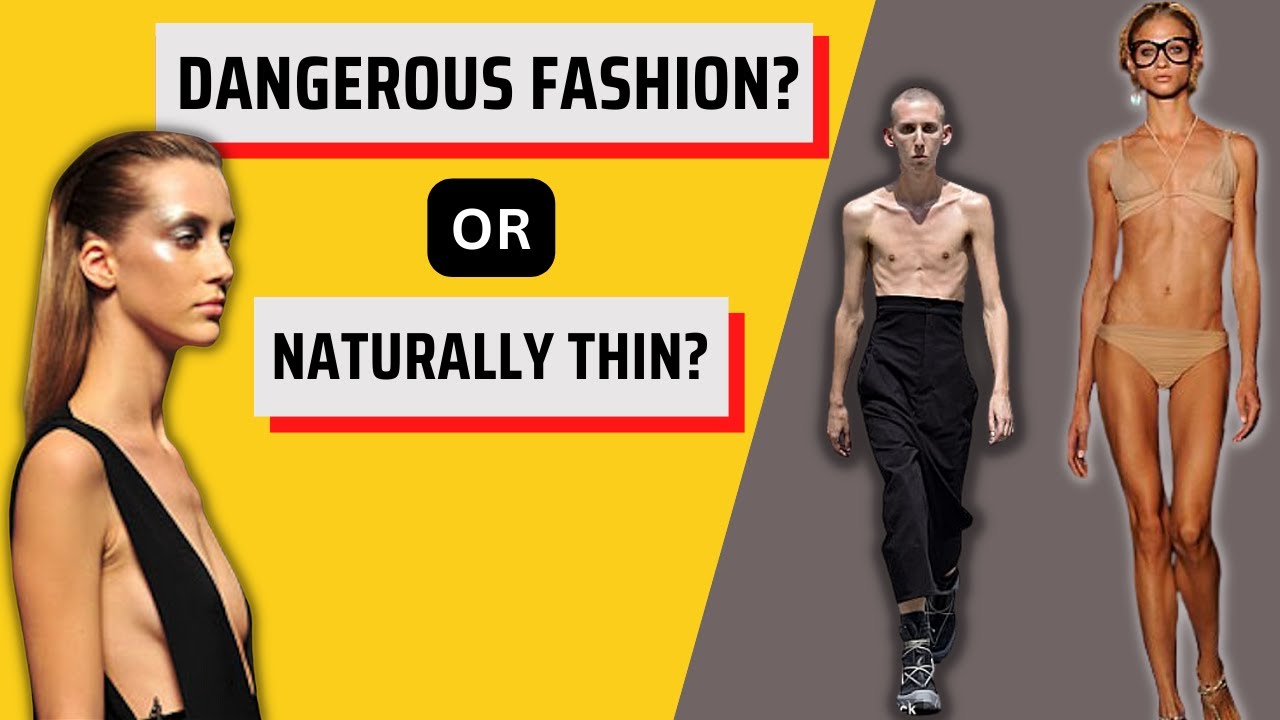Do Models Have to Be Underweight?

The models that grace the pages of fashion magazines and walk the runways are often unhealthily skinny. According to a new study by Northeastern University and Harvard, more than 62% of these women have a body mass index that is unhealthy by health standards.
This is a worrying trend. These women are vulnerable to developing an eating disorder and could be putting their health at risk.
How do models get to be so thin?
Every Fashion Week, a new round of headlines about perilously thin models appears and stirs up debate over who is to blame. Many people blame magazine editors, who reportedly push designers to use skinny girls and boys. Others point to designers, who reportedly refuse to work with a non-skinny model for fear of losing business. But the truth is a little more complicated than that.
It’s not clear exactly why the fashion industry became so obsessed with the size zero look, but it’s likely that there are a number of factors at play. First, there is the practical philosophy that clothes fit better on slender bodies, which saves on fabric costs. Second, there is our society’s deep-seated obsession with youth — and nothing says young like a pin-thin girl in a skimpy outfit.
Whatever the reason, it’s clear that models are forced to go to dangerously extreme lengths to maintain their slim figures. A recent study by Northeastern University, Harvard and the labor organization The Model Alliance found that 81% of models possess a body mass index, or BMI, that would be classified as underweight. The study also found that models frequently experience pressure from their agencies to lose weight, and some even suffer eating disorders as a result.
Aside from eating disorders, most models are extremely slender because they follow a strict diet and workout regimen to stay camera-ready. The most common dietary staple for all models is lean proteins such as eggs, salmon, avocado and chicken. Many models also eat plenty of green leafy vegetables, which are low in calories and high in fiber, vitamins and antioxidants.
As for the exercise, models are known to spend hours in the gym squeezing in workouts on top of their normal day jobs. Some even take part in plyometric exercises, which are a form of short bursts of intense exercise that help build endurance and burn fat. Many models also drink lots of water to stay hydrated, which helps suppress hunger cravings. And of course, all models are encouraged to eat healthy fats such as olive oil, avocado and plain Greek yogurt, which provide the body with essential nutrients and keep it feeling full.
Do models have to be underweight?
The fashion industry’s use of stick-thin models has prompted debate on whether the practice is unhealthy and encourages an unhealthy body image. It is also thought to be contributing to the increasing number of eating disorders among young people. In 2006, French model Isabelle Caro died of anorexia at the age of 28. Her death sparked a global debate about the issue and led to major fashion houses banning excessively thin models from their shows.
France has become the latest country to pass legislation against excessively thin models, following Spain and Italy’s lead. The law requires models to have a BMI of at least 18 and to carry health certificates. It also bans the use of images that have been digitally edited to make a model look thinner, and requires that these be clearly labeled as such.
Do models need to lose weight?
While a model may need to lose weight at times, it is important that they do so in a healthy way. This means eating a balanced diet and avoiding foods that are high in fat, sugar and salt. Additionally, they should avoid processed foods as these can be extremely unhealthy for the body. A model should also drink plenty of water as this can help to cleanse the body and keep it hydrated.
Many models are underweight because they are subjected to a lot of pressure to be thin. This can lead to unhealthy eating habits and even anorexia. The good news is that the fashion industry has started to take notice and some countries have even passed legislation to stop excessively skinny models from appearing in their shows.
There are many different ways that models can lose weight, including dieting and exercising. However, it is important for models to remember that just because they are thin does not mean that they should be treated like superhumans. Instead, they should be treated with the same respect as anyone else.
In addition to diet and exercise, models can also use other methods to lose weight, such as smoking or chewing cotton balls. Some models may even resort to starving themselves or taking laxatives in an attempt to lose weight quickly. These are all very dangerous and can cause serious health problems.
A model’s diet should be made up of lean proteins, whole grains, fruits and vegetables. It is important that they eat a variety of foods as this can help them maintain their muscle mass and prevent deficiencies in certain nutrients. A model should also try to limit their alcohol consumption as this can be a major source of calories.
Models often have a very hectic schedule and it can be difficult for them to get enough nutrients. To make sure that they are getting enough nutrients, it is important for them to eat a balanced meal at least three times a day.
Despite the dangers of being too thin, it is still common for models to be told by their agents that they need to lose weight. In fact, a recent study conducted by Northeastern University and Harvard found that 62% of models have been told to lose weight. This is a huge problem and it needs to be addressed immediately.
Do models need to be healthy?
Models eat and exercise regularly to keep their bodies healthy. They might even have a personal trainer or nutritionist who can help them stay on track. They’ll also drink lots of water, typically aiming for 2 litres per day. This is to stay hydrated and to help their metabolism burn calories faster.
Some models might struggle with disordered eating. This can be caused by unhealthy dieting and exercise habits, or by an underlying mental health issue. For example, anorexia can lead to heart failure, bone loss, organ damage, and even death. Some models may also have bulimia, which involves alternating between restricting food and binging on large quantities of food.
The fashion industry has been accused of forcing models to become dangerously thin. There have been numerous horror stories of models starving themselves or going to extreme lengths to maintain their thin frames. One famous case involved Brazilian model Ana Carolina Reston, who died in 2006 after a two-year battle with anorexia. Many models fear that if they seek treatment for an eating disorder, it will jeopardize their career. It’s a valid concern, especially since the fashion industry has long pushed unhealthy images.
However, it seems like the industry is finally starting to shift towards a more healthy direction. More and more campaigns are hiring plus-sized models, and Anna Wintour has a rule about not photographing any girls who have an eating disorder. In addition, several countries have passed laws banning excessively skinny models from working in the fashion industry.
A recent study found that a typical model strutting down the runway during Fashion Week has a BMI below 18.5, which is considered severely underweight by the World Health Organization. The authors of the study, Katherine Record and S. Bryn Austin, argue that the modeling industry should be regulated by the Occupational Safety and Health Administration just like coal miners are.
Most models work with a team to help them look their best for photo shoots and events. They might have a personal trainer, a nutritionist, and a stylist who can help them keep their body in the right shape. They’ll try to eat a balanced diet that includes plenty of lean proteins, fruits, vegetables, and healthy fats. They’ll also try to get enough rest, drinking plenty of water and doing low-impact exercises to give their bodies a chance to recover.




















